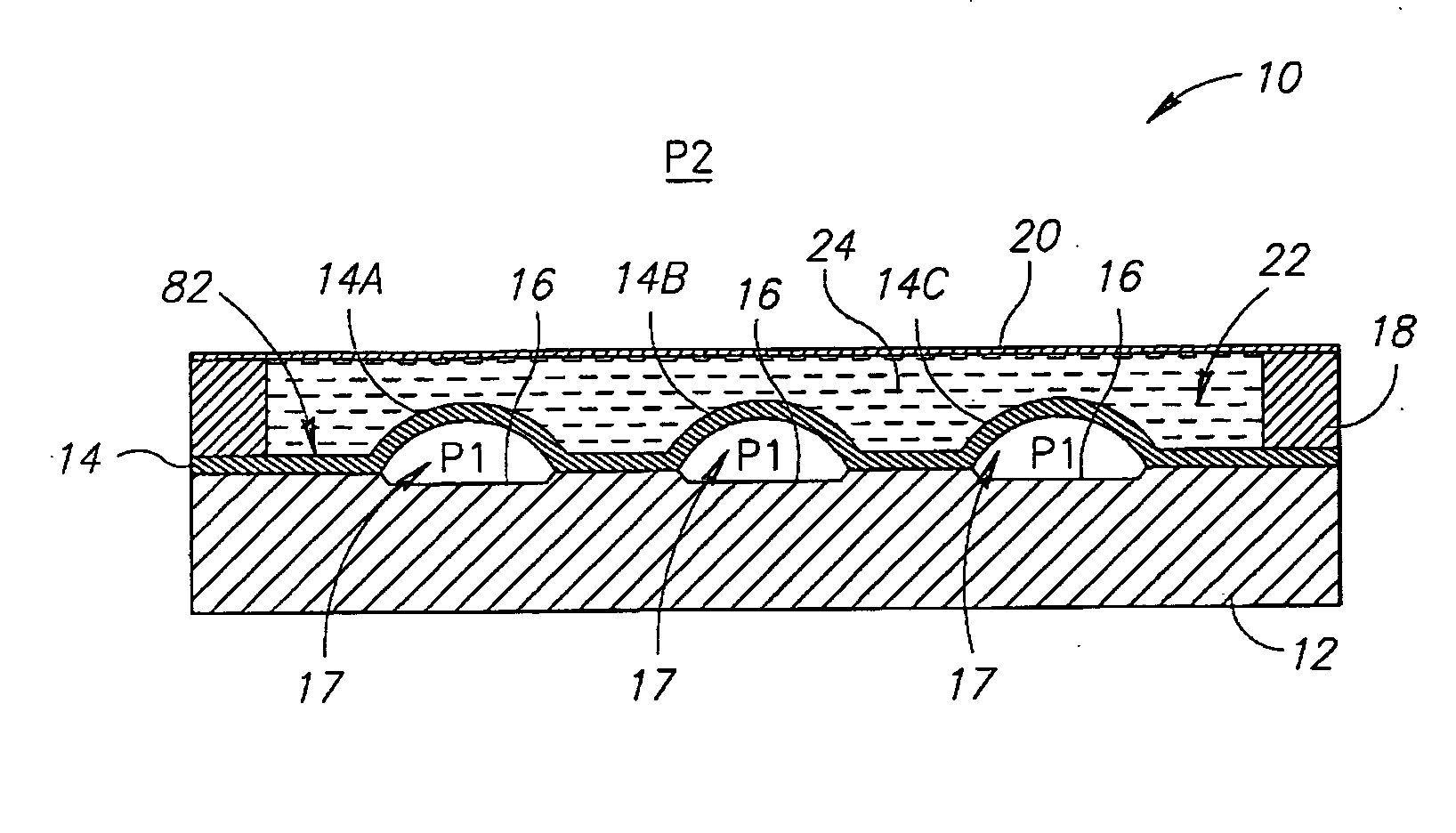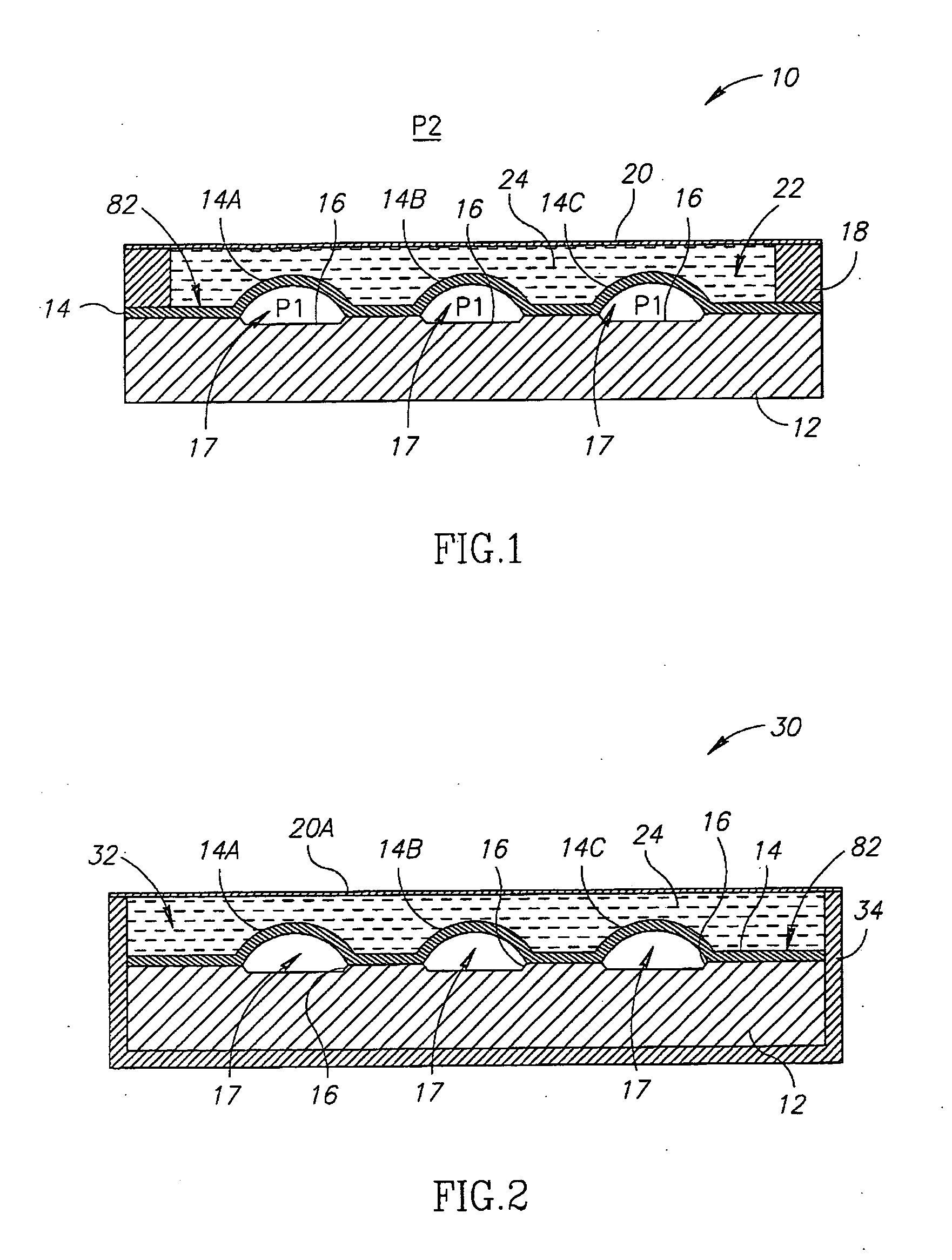Method for protecting resonating sensors and open protected resonating sensors
a technology of resonating sensors and open protected resonating sensors, which is applied in the field of resonating sensors, can solve the problems of affecting the performance and accuracy of the sensor, the characteristics of the vibratable part of the sensor, and similar adverse effects on the performance of the sensor
- Summary
- Abstract
- Description
- Claims
- Application Information
AI Technical Summary
Benefits of technology
Problems solved by technology
Method used
Image
Examples
experiment 1
[0251] Experiment 1
[0252] The experiment was performed using the multi-membrane passive ultrasonic pressure sensor 20 illustrated in FIGS. 2 and 3 of co-pending U.S. patent application Ser. No. 10 / 828,218 to Girmonski et al. The sensor was first placed on a slab of gelatin. The gelatin slab was prepared from a commercial food grade gelatin powder mixed with warm water (42% w / w) and cast to form a slab having a thickness height) of approximately six centimeters. The gelatin slab was placed in a controlled pressure chamber, and the sensor was positioned on top of the gelatin slab. The gelatin slab and the sensor were then covered with water and interrogated at various different pressure levels by an ultrasonic beam having a carrier frequency at 750 KHz and eleven sensor exciting frequencies of 72 KHz, 74 KHz, 76 KHz, 78 KHz, 80 KHz, 82 KHz, 84 KHz, 86 KHz, 88 KHz, 90 KHz and 92 KHz using the Doppler method disclosed by Girmonsky et al. in the above referenced co-pending U.S. patent ap...
experiment 2
[0254] Experiment 2
[0255] The experiment was performed using the multi-membrane passive ultrasonic pressure sensor 20 illustrated in FIGS. 2 and 3 of co-pending U.S. patent application Ser. No. 10 / 828,218 to Girmonski et al. The sensor was first placed in a controlled pressure chamber, covered with water and interrogated at various different pressure levels by an ultrasonic beam, as described for EXPERIMENT 1 above, to obtain a first measurement results data set and to determine the resonance frequency of the sensor at each known pressure level in the pressure chamber. The sensor was then taken out of the water and the upper part of the sensor (including the nine vibratable membranes of the sensor) was then covered with a thin layer of gelatin (42% w / w in water) prepared as disclosed in EXPERIMENT 1 above, by casting the warm gelatin solution on the upper surface of the sensor and letting the gel solidify. The thickness of the gelatin layer covering the upper part of the sensor and ...
PUM
 Login to View More
Login to View More Abstract
Description
Claims
Application Information
 Login to View More
Login to View More - R&D
- Intellectual Property
- Life Sciences
- Materials
- Tech Scout
- Unparalleled Data Quality
- Higher Quality Content
- 60% Fewer Hallucinations
Browse by: Latest US Patents, China's latest patents, Technical Efficacy Thesaurus, Application Domain, Technology Topic, Popular Technical Reports.
© 2025 PatSnap. All rights reserved.Legal|Privacy policy|Modern Slavery Act Transparency Statement|Sitemap|About US| Contact US: help@patsnap.com



